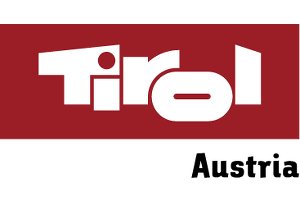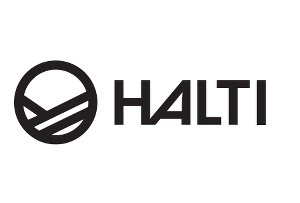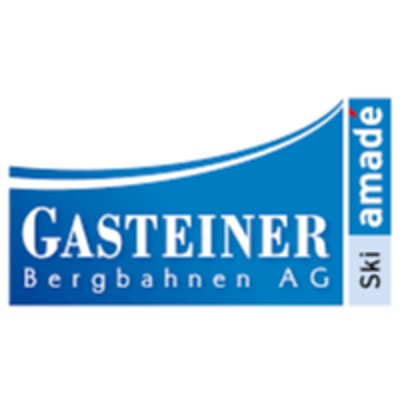Interalpin: Leitner Cable Cars As A Sustainable System For Urban Mobility

Urban cable car projects of the HTI Group around the globe demonstrate high transport efficiency, resource-saving operation and cost-saving functionality.
Cable cars: the future of urban mobility
The further development of urban mobility poses an ever greater challenge worldwide. Growing private transport, increasing space constraints, and the need for environmentally friendly transportation in times of climate and energy crises are increasingly prompting a rethink. In many metropolitan areas, cable cars are at the forefront of the search for strategies for the sustainable expansion of public transport services. The advantages of state-of-the-art cable car technologies from the HTI Group (which operates worldwide with the cable car companies LEITNER, POMA, and Bartholet ) range from low investment and operating costs to high reliability and accessibility, as well as adaptability to a wide variety of topographical and urban conditions.
Mexico City, Medellin, Santo Domingo, and many other major cities around the globe are already leading the way and demonstrating in daily operation how effectively cable cars can be integrated into public transport networks. As prime examples of electromobility, they meet the most important requirements of a climate-friendly means of transport and, thanks to their electric drive and the absence of fossil fuels, avoid direct CO₂ emissions. But that's not the only reason why cable cars are such a good fit for cities. They also require little space, can overcome any obstacle, and save passengers a significant amount of time. Furthermore, a single motor can power several vehicles at once. Cable cars can also play an extremely useful role in connecting sensitive local recreational areas in urban environments. They require minimal contact with the ground and have only a minimal impact on the environment.
Exclusive roadway, barrier-free entry and exit & low investment and operating costs
The cable car is particularly unaffected by the capacity constraints of urban road networks, characterized by increasingly frequent traffic jams and accidents, and guarantees passengers a smooth ride. The "exclusive" aerial track allows for consistent travel times without waiting times or timetables, and is unaffected by road traffic. Another advantage is the "level walk-in"—barrier-free entry and exit in all cabins. The low entry speed into the stations and stop-and-go technology allow for unrestricted use with strollers, wheelchairs, or bicycles. Furthermore, the cable car is by far the safest means of transport in urban areas.
Another argument many municipalities consider when making their decision is cost. Urban cable cars are particularly cost-effective compared to other modes of transport – from construction to operation and maintenance. The cost of a cable car is about half that of a tram and about one-tenth that of a subway. Thanks to their modular design, cable cars from the HTI Group can be implemented within a short time after the order is placed.
Whether hilly, densely built-up or by the water – cable cars overcome every obstacle
A huge advantage is the ability of a cable car to handle steeper gradients than any other vehicle and to adapt to any terrain. It doesn't matter whether an area is densely built up, spread across multiple elevations, or crossed by water: cable car routes can be individually adapted to specific needs and thus implemented as close as possible along the shortest distance. Supports and stations take up relatively little space, and the cable cars blend seamlessly into the urban landscape.
Current examples: LEITNER, POMA and Bartholet make cities sustainable and fit for traffic
The city of Ecatepec de Morelos, part of the metropolitan region around Mexico City, is considered a global pioneer in the integration of cable cars into the urban transport network. This success story, now spanning nine years, began with the construction of the five-kilometer-long "Mexicable 1 – Linea Roja." The official opening of "Mexicable 2 – Linea Verde" on March 30, 2023, closed an important gap in Ecatepec de Morelos' cable car network. Since then, the LEITNER system, consisting of three interconnected cable cars, has transported approximately 35,000 people daily from the municipalities of Ecatepec de Morelos and Tlalnepantla de Baz to Mexico City.
Also in Mexico City, LEITNER's "Cablebús 2" ropeway system has been transporting up to 85,000 passengers per day since its opening in 2021, covering a distance of 10.6 kilometers and seven stations. The system remains the longest ropeway line in Latin America and is listed in the Guinness Book of Records. The 10-passenger gondola lift in the Iztapalapa district, southeast of the Mexico City metropolitan area, offers residents of this area, which has a population of 1.8 million, significantly improved connections to jobs, schools, and recreational opportunities. Thanks to the new cable car, travel time for this route has been significantly reduced from 75 to just 36 minutes.
While LEITNER is represented with other projects in Ankara, Barcelona, Berlin, Cali (CO), Pisa, and Perugia, among others, POMA has already built its third urban gondola lift in the Dominican Republic within six years. The first was built in Santo Domingo in 2018 as a response to the city's mobility problems. At the time, it was the first urban cable car in the Caribbean to achieve an annual capacity of around five million rides. This and the second cable car in Santo Domingo are connected to the subway network.
A four-kilometer-long gondola lift is currently being put into operation in Santiago de los Caballeros. In Medellin, six POMA cable cars have already been built as part of the Colombian city's public transport system, while in Madagascar's capital, Antananarivo, a line of three urban POMA cable cars with a length of 8.7 kilometers, carrying 40,000 passengers daily, is currently being built. POMA has also been successful in Europe: In the French city of Toulouse, the company built the first urban tricable gondola lift in France. It connects three of the city's academic centers and reduces travel time by two-thirds compared to the fastest connection before the gondola was commissioned. Other POMA urban projects have been built in Algeria, La Réunion, Colombia, and Ecuador. A modern cable car with a length of approximately three kilometers will be completed in Ajaccio, the capital of Corsica, by 2025.
The Swiss cable car company Bartholet, also a member of the HTI Group, built France's first cable car integrated into public transport in Brest, northern France, in 2016. A special feature of the system is its 82-meter-high, single support, which allows ships to safely enter the port. Since 2018, a Bartholet cable car has allowed people in Moscow to comfortably float from the Olympic Stadium in the city center over the 'Vorobyovy Gory' ('Sparrow Hills') to the Kosygina station, offering unique panoramic views. Bartholet is currently building India's first urban cable car in Varanasi.
Future projects: LEITNER awarded contract for Italy's first urban cable car and two major projects in Mexico
Following LEITNER's success in the city of Trieste's tender for Italy's first urban cable car, planning work has now been completed. The cable car will start in the center of Trieste, near the train station, and run through Porto Vecchio to Bovedo near Barcola. From there, a second section, approximately 2,300 meters long, begins, extending to the suburb of Opicina. The system will consist of 100 10-passenger cabins, capable of transporting 1,800 people per hour in each direction at a speed of 6 m/s. The total length is 4,873 meters. The journey time from Opicina to the center of Trieste will be just 16 minutes, and the spacious Diamond Evo cabins will comfortably accommodate 10 passengers, plus bicycles and strollers. As part of the “Inspiration Days” at Interalpin, LEITNER, as a partner of this format, will demonstrate its expertise in the field of urban ropeways using this project as an example and present its skills in the realization of other urban facilities around the globe.
The unstoppable triumph of urban ropeways in Mexico continues, and LEITNER, again supported by its Mexican partner Alfa Proveedores y Contratistas, has signed two new contracts for a total of 15 kilometers of new ropeways, in addition to the 24 kilometers that LEITNER has already installed in recent years.
The first is a cable car, the construction of which began in the fall of 2024. It is being built in the UNESCO World Heritage city of Morelia, a city with a population of one million, 250 kilometers west of Mexico City in the state of Michoacán. With a total length of 5.6 kilometers and an hourly capacity of 1,500 people, the system has six stations. The main station is located in the immediate vicinity of the city center, from where the two lines branch off. The first line, with two intermediate stations, runs northwest to the bus station near the stadium. The second line runs south, with an intermediate station connecting the university campus and the zoo. The entire project will cost €90 million and is scheduled for completion by the fall of 2026. A further extension of the Morelia cable car, with an additional 1.6 kilometers, has also been announced.
A second 9.6-kilometer-long cable car will be built by fall 2026 in Naucalpan, in the greater Mexico City area, west of the capital. The major investment of €200 million will consist of three lines with 10 stations and will sustainably complement public transport in this part of the city. Around 380 cabins will transport millions of people each year on the three lines, further underscoring the importance of cable cars in Mexico's urban mobility.
At INTERALPIN 2025, you'll find more information on the topic of urban mobility with cable cars. Key industry players will also present current and past projects in this area.













